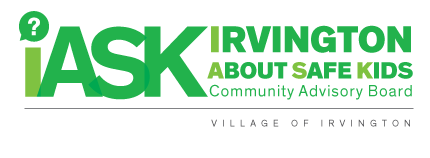Nationally, teen cigarette smoking has been decreasing for many years and after a dramatic rise in e-cigarette use between 2011 and 2015, ecigarettes use by teens fell from 16% in 2015 to 11.3% in 2016 according to a report by the OOC. The decline is believed to be due to a combination of tobacco restrictions, public education, and taxes. An ecigarette sometimes called an electronic nicotine delivery system (ENDS), e-cig, hookah pen, hookah stick or vaping device is designed to mimic smoking a cigarette.
In NY State cigarette smoking by high school students fell to a record low of 4.3% in 2016, down from 27.1% in 2000. But e-cigarette use nearly doubled in the last two years from 10.5% in 2014 to 20.6% in 2016 according to the NYS Department of Health. This underscores the need for New York parents to reinforce the harmfulness of these products. The device can resemble a real cigarette or look more like a pen or marker. The device delivers nicotine or non nicotine “ejuice” or other substances to the smoker in a vapor form. A battery powers a heating element that vaporizes the liquid nicotine contained within a cartridge in the e-cigarette so that what’s inhaled and then exhaled looks like smoke, but is usually odorless. They often come in colorful packaging and have flavors marketed to young people such as strawberry, apple, bubblegum, or watermelon. For some teens the appeal is being able to compete with peers on who can “blow” the best smoke rings.
It is hard for parents to identify all forms of ENDs but currently a popular brand of e-cigarettes is Juul. The device is usually filled with a flavored nicotine, however, it can also be used for marijuana. The device can be plugged into a USB charger in order to work to vaporize the nicotine or other substances a teen chooses to put into the device. There is usually no odor when one chooses to use this device so if a parent is not aware of what this device is, they may think it is a flash drive. The reality is that it is delivering a harmful substance into the lungs. Previous studies have identified some troubling trends. In the first analysis of the relationship between e cigarette use and smoking among adolescents in the United States, University of California at San Francisco researchers found that adolescents who used the devices were more likely to smoke cigarettes and less likely to quit smoking.
The 2015 report on ENDS in New York State found the following:
- The prevalence of ENDS use among high school students (10.5%) and young adults (12.7%) is about twice as high as the prevalence of ENDS use among adults (5.7%).
- There is no evidence that youth are substituting ENDS for cigarettes. In fact, more than half of high school students and young adults who smoke cigarettes also use ENDS, making dual use of cigarettes and ENDS the norm.
- Among the 7.3% of high school students who are current smokers, 56.5% also use ENDS.
- Among the 14.2% of young adult smokers (age 18-24 years), 54.9% use ENDS.
- Among the 17.3% of adult smokers (age 25 and older), ENDS use is significantly lower, at 24.0%.
E-cigarettes can contain various levels of nicotine a highly addictive drug. People who regularly use nicotine and then suddenly stop experience withdrawal symptoms, which may include cravings, anxiety, depression, moodiness, irritability, and inattentiveness.
The American Heart Association says that nicotine from smoking is one of the hardest substances to quit. According to the U.S. Food and Drug Administration, tests of e-cigarette samples found that they
contain carcinogens and toxic chemicals such as diethylene glycol, an ingredient used in car antifreeze. The potential harm from exposure to secondhand vapor from e-cigarettes is unknown. Two initial studies have found formaldehyde and cancer causing substances coming from secondhand vapors (American Lung Association, 2011).
Source: Patricia Murphy Warble, LMSW, CPP, Parenting for Prevention June 2017










